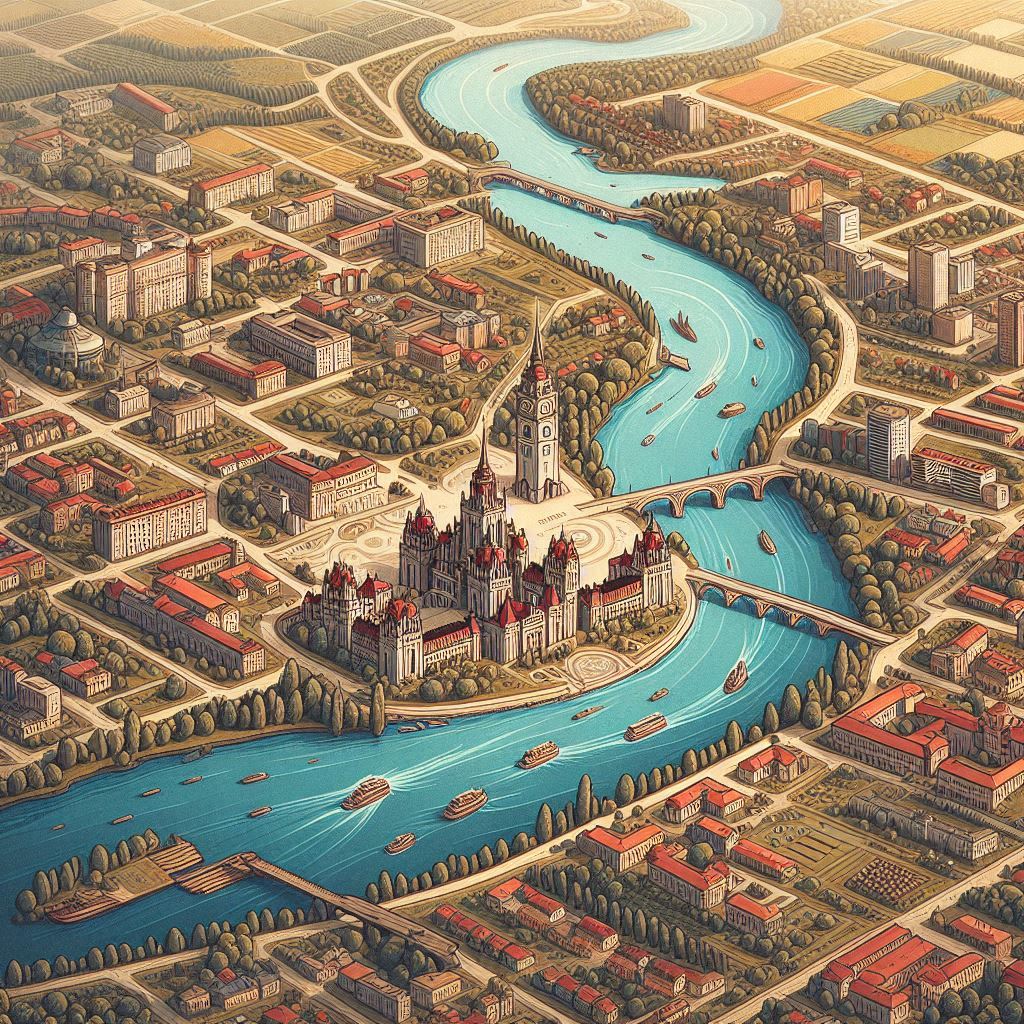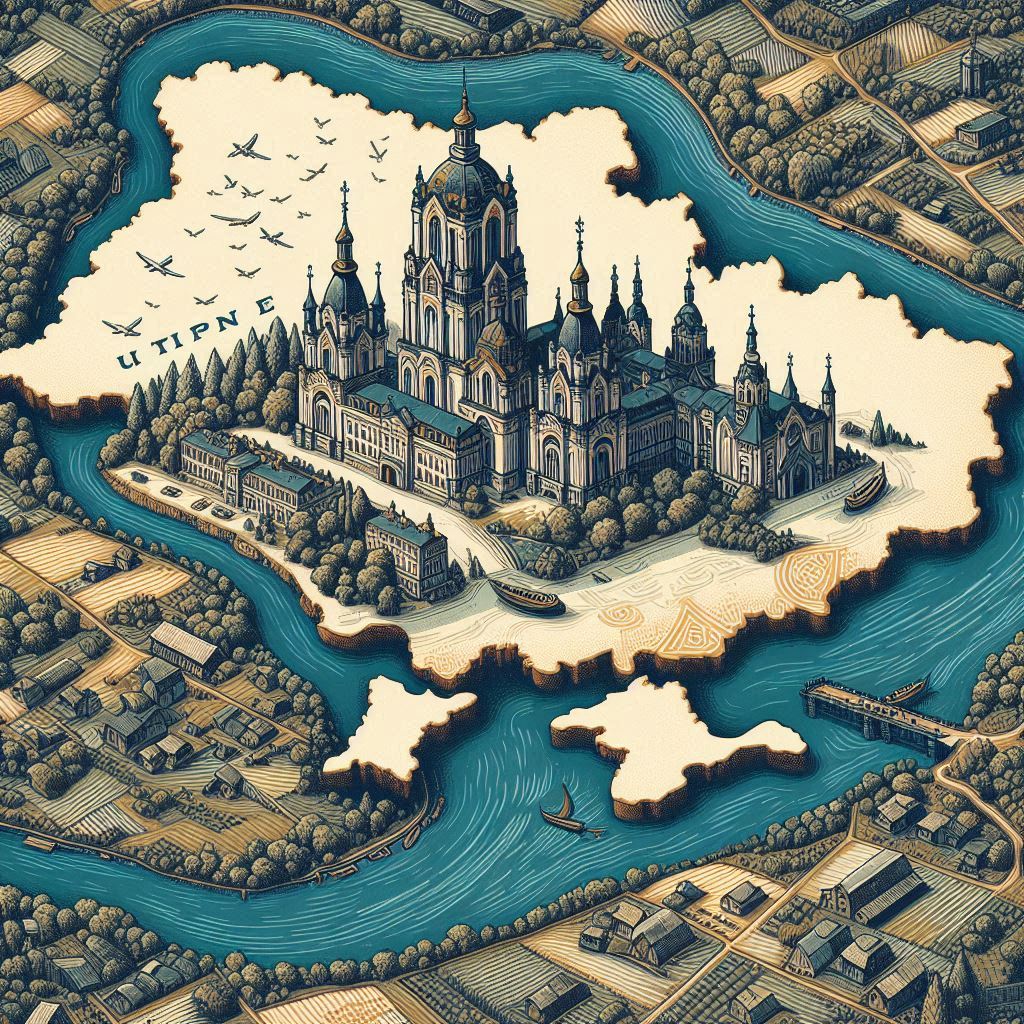烏克蘭城市:蘇梅州(Sumy Oblast),近期已經撤離6000人。
蘇梅州(Sumy Oblast)位於烏克蘭的東北部,與俄羅斯接壤,是烏克蘭的一個重要行政區。蘇梅州的首府是蘇梅市,這裡是該州的經濟、文化和行政中心。該州的面積約為23,800平方公里,爆發戰爭前的人口超過100萬。當地以其豐富的自然資源、悠久的歷史和多樣化的文化背景而聞名。
該州的歷史可以追溯到古代斯基泰人和薩爾馬提亞人的時代,這片土地在過去經歷多次民族遷徙和政權更替。中世紀時期,該地區成為基輔羅斯的一部分,隨後被蒙古帝國征服。蒙古統治結束後,經歷波蘭立陶宛聯邦的統治,直到17世紀後期,這片土地被哥薩克控制,並逐漸成為沙皇俄國的一部分。
18世紀和19世紀,蘇梅州的城市和村莊得到迅速的發展,成為俄羅斯帝國的重要農業區和工業區之一。該地區以其肥沃的黑土聞名,是糧食和糖類生產的主要地區之一。主要居民為烏克蘭人,約佔人口的90%以上。除此之外,還有少量的俄羅斯人、白俄羅斯人和其他少數民族。烏克蘭語是該州的主要語言,但由於歷史上的俄羅斯統治,俄語也在當地廣泛使用。當地多數信奉東正教,並且有著深厚的宗教傳統。
該地區的文化受東斯拉夫傳統影響深遠,當地的節慶、音樂和民間藝術都體現出豐富的烏克蘭文化特點。蘇梅州的居民熱衷於慶祝傳統的烏克蘭節日,如復活節和聖誕節,並保留著許多古老的風俗習慣。在歷史上經歷多次重大戰役和政治動蕩。第二次世界大戰期間,該地區是蘇聯和納粹德國之間激烈戰鬥的場地之一。蘇梅州在1941年被德軍佔領,並在1943年被蘇聯紅軍解放。戰爭對當地造成嚴重破壞,許多村莊和城市在戰後需要進行重建。
在1991年隨著烏克蘭從蘇聯獨立後,成為新成立的烏克蘭共和國的一部分。在現代,蘇梅州因其與俄羅斯的邊境位置而成為烏克蘭東部地區衝突的前線之一。自2014年以來,由於烏克蘭東部的動蕩和俄羅斯的干涉,蘇梅州在烏克蘭的國家安全和領土完整方面發揮重要作用。今天,蘇梅州是一個經濟多樣化的地區,以農業和工業為主要經濟支柱。該州生產大量的穀物、糖類和其他農產品,並且在機械製造、化工和食品加工等行業具有顯著的地位。蘇梅市作為該州的首府,不僅是經濟中心,也是教育和科研的重要基地,擁有多所大學和科研機構。
總的來說,這是一個具有豐富歷史、深厚文化和戰略重要性的地區。它不僅是烏克蘭的重要農業和工業區,也是該國在東部邊境防線上的重要防禦區。隨著時間的推移,蘇梅州在烏克蘭的經濟、文化和政治舞台上繼續發揮著重要作用。
註:當2022年爆發俄羅斯的全面入侵,相較於哈爾克夫受到嚴重的轟炸攻擊,蘇梅州並沒受到太多損害。當近期烏克蘭成功占領俄羅斯領土後,該地的居民開始大量撤離,人數高達6000人。
Sumy Oblast, located in northeastern Ukraine, borders Russia and serves as an important administrative region within the country. The capital of the oblast is Sumy, which functions as the region's economic, cultural, and administrative center. Covering an area of approximately 23,800 square kilometers, Sumy Oblast had a population of over one million before the outbreak of war. The region is renowned for its rich natural resources, long history, and diverse cultural heritage.
The history of Sumy Oblast dates back to ancient times when it was inhabited by the Scythians and Sarmatians. Over the centuries, this land witnessed numerous migrations and changes in political power. During the medieval period, the area became part of Kievan Rus' and was later conquered by the Mongol Empire. After Mongol rule ended, the region came under the control of the Polish-Lithuanian Commonwealth until the late 17th century, when it was gradually taken over by the Cossacks and eventually became part of the Tsardom of Russia.
During the 18th and 19th centuries, the cities and villages of Sumy Oblast developed rapidly, becoming a vital agricultural and industrial area within the Russian Empire. The region was particularly noted for its fertile black soil, making it a major producer of grain and sugar.
The majority of the population in Sumy Oblast consists of Ukrainians, accounting for over 90% of the population. There are also small numbers of Russians, Belarusians, and other minority groups. Ukrainian is the predominant language, but Russian is also widely spoken due to the historical influence of Russian rule. The region is predominantly Eastern Orthodox, with deep-rooted religious traditions.
Culturally, the region is deeply influenced by East Slavic traditions. Local festivals, music, and folk art reflect the rich Ukrainian cultural characteristics. Residents of Sumy Oblast enthusiastically celebrate traditional Ukrainian holidays such as Easter and Christmas, preserving many ancient customs and practices.
Throughout history, Sumy Oblast has experienced significant battles and political turmoil. During World War II, the region was a battleground between the Soviet Union and Nazi Germany. Sumy Oblast was occupied by German forces in 1941 and liberated by the Soviet Red Army in 1943. The war caused extensive damage to the area, and many villages and cities required reconstruction after the conflict.
With Ukraine's independence from the Soviet Union in 1991, Sumy Oblast became part of the newly established Ukrainian Republic. In modern times, due to its location on the border with Russia, Sumy Oblast has become a frontline region in the conflict in eastern Ukraine. Since 2014, due to unrest in eastern Ukraine and Russian interference, Sumy Oblast has played a critical role in Ukraine's national security and territorial integrity.
Today, Sumy Oblast is an economically diverse region, with agriculture and industry as its primary economic pillars. The region produces a significant amount of grain, sugar, and other agricultural products and has a notable presence in industries such as machinery manufacturing, chemicals, and food processing. Sumy, as the capital, is not only the economic hub but also an important center for education and research, housing several universities and research institutions.
Overall, Sumy Oblast is a region rich in history, culture, and strategic importance. It is not only a vital agricultural and industrial area in Ukraine but also a key defensive region on the country’s eastern border. Over time, Sumy Oblast continues to play a crucial role in Ukraine's economic, cultural, and political landscape.
Note: During the full-scale invasion by Russia in 2022, Sumy Oblast, unlike Kharkiv, did not suffer extensive damage. However, following Ukraine's successful recapture of Russian-occupied territory, a large number of residents began to evacuate from the area, with as many as 6,000 people leaving.



照片:DALLE3
- 1
- 2
- 3
- 4
